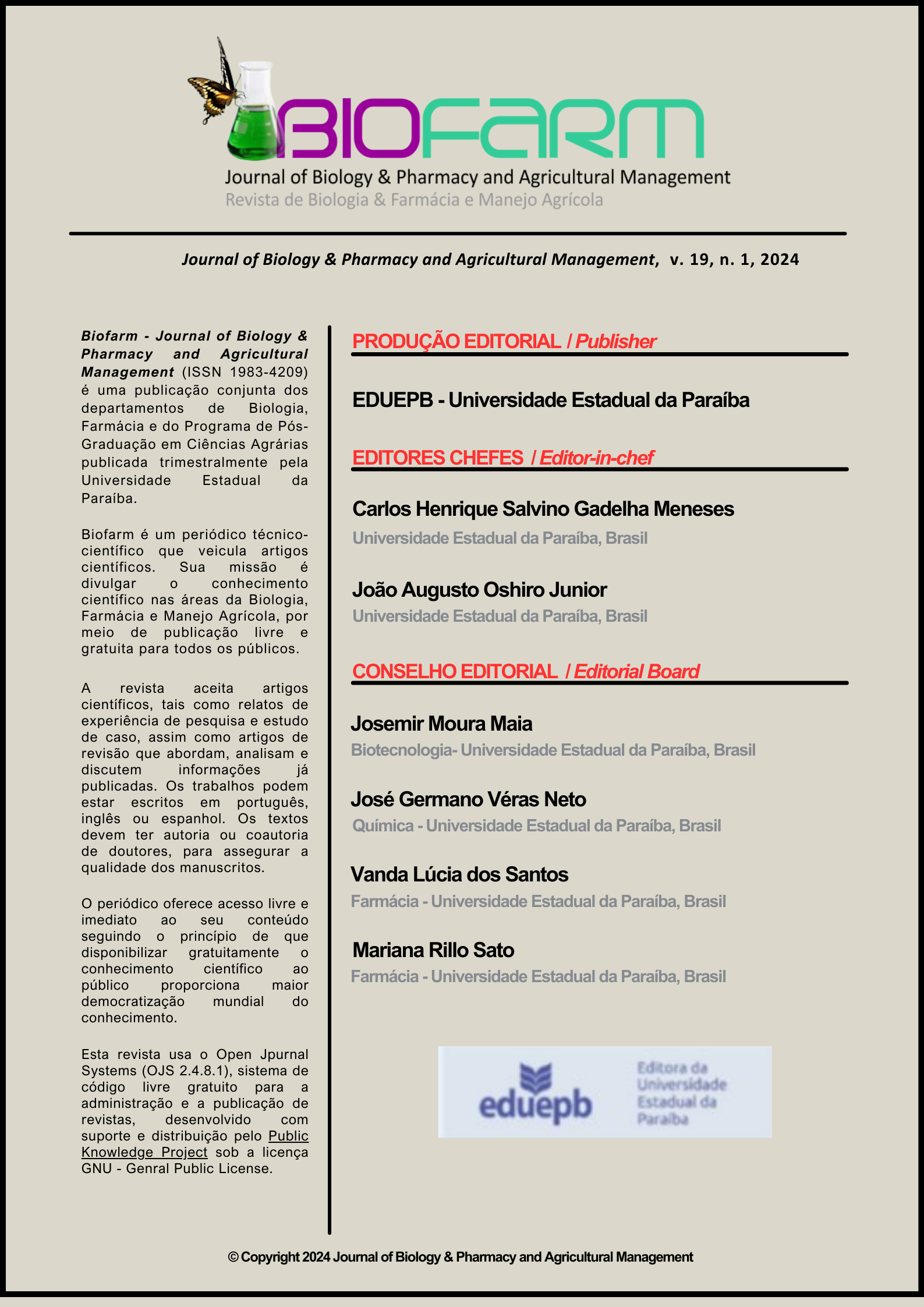Inibição do crescimento de Staphylococcus aureus por formulação contendo extrato etanólico de barbatimão
Abstract
Barbatimão is a Brazilian species traditionally used to treat vaginal infections. The organisms Staphylococcus aureus, Escherichia coli, and Proteus sp. are present in these infections and may be resistant to treatment. Therefore, the development of formulations that help fight vaginal infections is important. The objective of this study was to develop a formulation containing barbatimão and evaluate its stability and antimicrobial activity. The formulation was prepared using sodium lauryl ether sulfate, amide 90, cocamidopropyl betaine, lactic acid, barbatimão extract, imidazolinidil urea, sodium chloride, menthol, ethyl alcohol, essence, and brown dye. Stability tests were carried out at room temperature (25oC), in a conventional oven (40oC) and in a refrigerator (4oC) for 30 days. The parameters evaluated in the stability tests were color, brightness, odor, pH, and precipitate formation. The minimum inhibitory concentration (MIC) was determined at concentrations between 0.78 and 100% of the formulation. The stability of the oven and refrigerator was tested, and no changes in color, odor, brightness, and pH were observed after 30 days. Viscosity decreased by 10% in the oven test and increased by 5% in the ice-cooler. The formulation inhibited S. aureus growth by 100%. The MIC for Staphylococcus aureus was 25% of the formulation concentration. A formulation containing barbatimão emerges as a promising alternative for treating Staphylococcus aureus infections.
Downloads
Published
How to Cite
Issue
Section
License
Copyright (c) 2024 BIOFARM - Journal of Biology & Pharmacy and Agricultural Management

This work is licensed under a Creative Commons Attribution 4.0 International License.
Authors and co-authors retain copyright, but cede the right to first publication to the Journal of Biology & Pharmacy and Agricultural Management (BIOFARM).
Copyright encompasses exclusive rights to reproduce and deliver the article in all form and media, including reprints, photographs, microfilms and any other similar reproductions, as well as translations. The reproduction of any part of this journal, its storage in databases and its transmission by any form or media - such as electronic, electrostatic and mechanical copies, photocopies, recordings, magnetic media, etc. - will be allowed only with a written permission from the BIOFARM.
Articles published in BIOFARM will be Open-Access articles distributed under the terms and conditions of the Creative Commons Attribution License (CC BY). The copyright is retained by the author(s). BIOFARM will insert the following note at the end of the published text:
© 2023 by the authors; licensee BIOFARM, Campina Grande, Brazil. This article is an open access article distributed under the terms and conditions of the Creative Commons Attribution License (http://creativecommons.org/licenses/by/4.0/).


